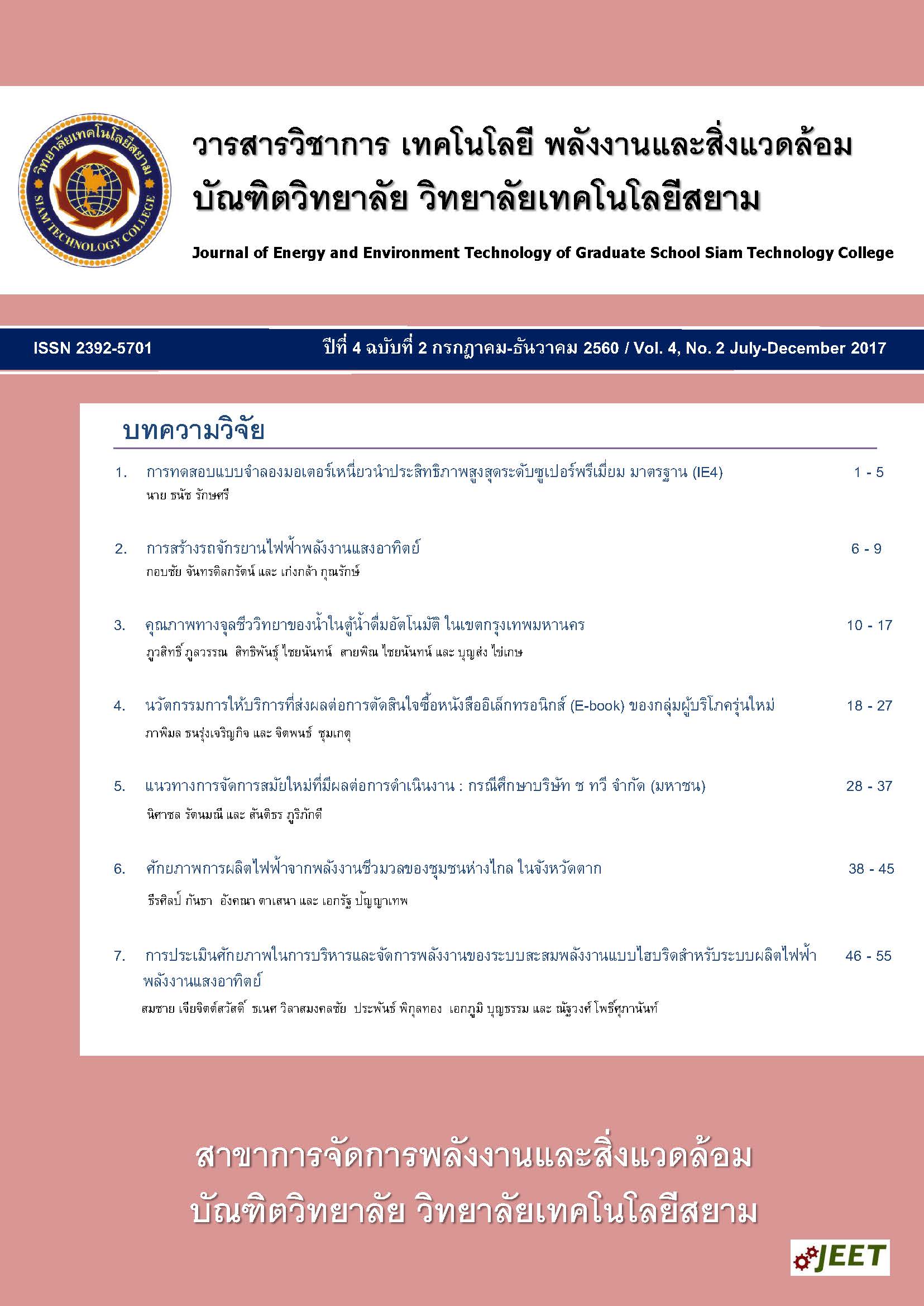Microbiolocal Quality of Water in Automatic Drinking Water Dispensers in Bangkok Metropolitan Area
Main Article Content
Abstract
This study investigated the microbiological quality of drinking water in the automatic drinking water dispenser located in the district of Dusit, Bangkok-Yai, and Bangkok-Noi of Bangkok metropolitan area. Samples were collected from automatic drinking water dispensers in the specified areas between August and December 2016. The date were analyzed using descriptive and inferential statistics. The total number of dispensers was 270 in which 10.3% of those were surrounded by the non-hygienic environment (i,e.,garbage/junk and water logged around the dispenser). There were only 13 dispensers that fully labeled according to the announcement of the label committee No. 31 B.E. 2553 (2010). 94.6% of dispensers have used Reverse Osmosis (RO) as a filtration process. According to the analysis of microbiological drinking water quality, 121 out of 270 samples or 44.8% were not obeyed by the standard. This finding is significantly related to the physical characteristics of the automatic drinking water dispensers (P <0.05), such as no door, door closed, and the door of the water outlet. Appropriate recommendation for applying the automatic drinking water dispenser is needed to provide the suitable information for the consumers.
Article Details
เนื้อหาและข่อมูลในบทความที่ลงตีพิมพ์ในวารสารวิชาการ เทคโนโลยี พลังงาน และสิ่งแวดล้อม บัณฑิตวิทยาลัย วิทยาลัยเทคโนโลยีสยาม ถือเป็นข้อคิดเห็นและความรับผิดชอบของผู้เขียนบทความโดยตรง ซึ่งกองบรรณาธิการวารสารไม่จำเป็นต้องเห็นด้วย หรือว่าร่วมรับผิดชอบใด ๆ
บทความ ข้อมูล เนื้อหา รูปภาพ ฯลฯ ที่ได้รับการตีพิมพ์ในวารสารวิชาการ เทคโนโลยี พลังงาน และสิ่งแวดล้อม บัณฑิตวิทยาลัย วิทยาลัยเทคโนโลยีสยาม ถือเป็นลิขสิทธิ์ของวารสารวิชาการ เทคโนโลยี พลังงาน และสิ่งแวดล้อม บัณฑิตวิทยาลัย วิทยาลัยเทคโนโลยีสยาม หากบุคคล หรือหน่วยงานใดต้องการนำทั้งหมด หรือส่วนหนึ่งส่วนใดไปเผยแพร่ต่อ หรือเพื่อกระทำการใด ๆ จะต้องได้รับอนุญาต เป็นลายลักษณ์อักษรจากวารสารวิชาการ เทคโนโลยี พลังงาน และสิ่งแวดล้อม บัณฑิตวิทยาลัย วิทยาลัยเทคโนโลยีสยาม เท่านั้น
References
(2) อรสา จงวรกุล. การวิจัยสถานการณ์ความปลอดภัยของการบริโภคน้ำที่ผลิตจากเครื่องผลิตน้ำดื่มหยอดเหรียญ. นนทบุรี:สำนักงานคณะกรรมการอาหารและยา กระทรวงสาธารณสุข; 2551.
(3) ตู้น้ำหยอดเหรียญปนเปื้อนแบคทีเรีย กทม. สุ่มตรวจด้อยคุณภาพ 7% ไทยโพสต์ (ออนไลน์). มกราคม 2554; (สืบค้น 17 ก.ค. 2559; (1 หน้า). เข้าถึงได้จาก : URL: http://www.thaipost.net/Node/32675
(4) พิชญากร มาพะเนาว์. การประเมินคุณภาพและสภาพแวดล้อมของตู้น้ำดื่มหยอดเหรียญในเขตคลองสามวา กรุงเทพมหานคร (วิทยานิพนธ์สาธารณสุขศาสตร์มหาบัณฑิต). คณะสาธารณสุขศาสตร์. ชลบุรี: มหาวิทยาลัยบูรพา; 2554
(5) ประกาศกระทรวงสาธารณสุข ฉบับที่ 61 (พ.ศ.2524) ราชกิจจานุเบกษา เล่มที่ 130 ตอนพิเศษ 136 ง (วันที่ 16 ก.ค.2559)
(6) ประกาศคณะกรรมการว่าด้วยฉลาก ฉบับที่ 31 (พ.ศ.2553) ราชกิจจานุเบกษา เล่มที่ 127 ตอนพิเศษ 140 ง (วันที่ 8 ธันวาคม 2553)
(7) Rice EW, Baird RB, Clesceri LS, Eaton AD. Standard methods for the examination of water and wastewater. 22nd ed. Washington, DC: American Public Health Association (APHA); 2012.
(8) ISO 19250, Water quality -- detection of Salmonella spp. Geneva: International Organization Standard; 2010.
(9) Environment Agency (EA). The microbiology of drinking water (2010) - Part 6 - methods for the isolation and enumeration of sulfite-reducing clostridia and Clostridium perfringens by membrane filtration. Bristol: Environmental Agency; 2010


